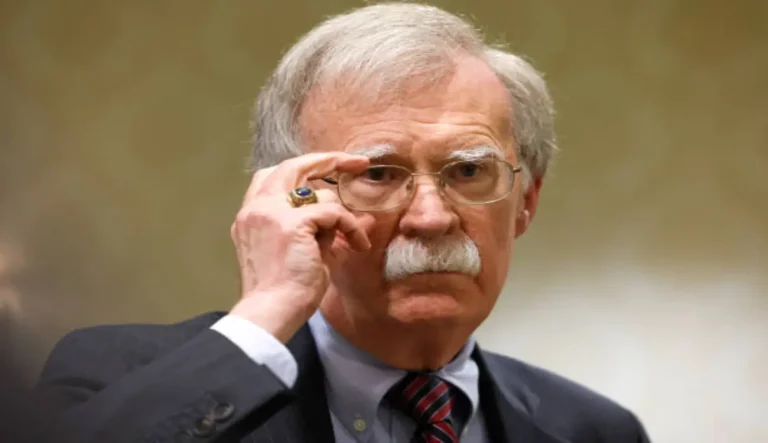The military operation marks one of the deadliest actions yet in Washington’s widening counter-narcotics campaign under President Donald Trump’s administration.
U.S. Defense Secretary Pete Hegseth said the vessels were operating along recognized narcotics routes between Latin America and the Pacific coast, routes long monitored by intelligence agencies for illegal shipments.
In a post shared on his official social media account, Hegseth stated that “the four vessels were known by our intelligence apparatus, transiting along established narco-trafficking corridors and carrying narcotics.”
He did not provide visual confirmation or specify the type and quantity of narcotics allegedly found on board.
US military expands counter-narcotics operations in Pacific
The U.S. Department of Defense said the three separate strikes were conducted on Monday with support from naval aircraft and surveillance assets already stationed in the region.
The Pentagon has yet to release detailed assessments of the targets destroyed or the type of ordnance deployed.
According to defense officials, the strikes followed weeks of aerial reconnaissance and electronic tracking coordinated with regional partners.
One surviving crew member was rescued by Mexican maritime authorities, who took over the search and recovery phase immediately after the U.S. operations concluded.
“Mexico’s Navy assumed operational control for the survivor’s extraction and medical response,” Hegseth said, commending the cross-border cooperation in what he called a “shared security effort.”
Mexico leads rescue amid limited Pentagon disclosure
The Mexican government confirmed that its navy units participated in the rescue of one individual found adrift in the aftermath of the explosions.
Officials said the survivor is in stable condition and remains under medical observation in an undisclosed coastal facility.
Mexico’s Secretariat of the Navy declined to comment on whether the individual will face extradition or prosecution under joint U.S.-Mexico drug enforcement protocols.
In Washington, Pentagon spokespersons provided no additional details about the identities or nationalities of those killed.
The Defense Department also withheld information about the estimated value of the narcotics allegedly being transported, citing operational security and ongoing intelligence reviews.
Questions over legality and transparency of US strikes
The strikes, conducted beyond U.S. territorial waters, have triggered renewed debate within Congress about the legal framework authorizing such operations.
Democratic lawmakers have questioned the administration’s reliance on military assets rather than the U.S. Coast Guard, which traditionally enforces maritime narcotics laws.
Several legal experts told reporters that while the U.S. military can act against immediate threats, targeting drug traffickers without imminent risk to national security raises concerns under the law of armed conflict.
According to analysts interviewed by Reuters’ defense correspondents, the decision to employ combat aircraft and destroyers instead of interception teams underscores a shift in operational doctrine toward deterrence through overwhelming force.
Defense officials maintain that the missions were carefully reviewed and authorized through established channels within the Department of Defense and the National Security Council.
Footage released from the strike zone
A 30-second video clip shared by Hegseth appeared to show two vessels positioned close together before a flash of light engulfed both targets.
Another sequence displayed a single boat moving through open water seconds before a detonation, sending debris into the air.
The authenticity and timestamp of the video have not been independently verified.
Defense analysts say the footage resembles precision-guided missile strikes typically executed by U.S. Navy aircraft operating from carrier strike groups.
One such carrier, the USS Gerald R. Ford, was reported to have entered Caribbean waters earlier this week as part of the expanding U.S. military deployment in the region.
Regional tension rises amid counter-drug campaign
The Pacific operation is the latest in a string of air and sea strikes that have heightened diplomatic friction with Venezuela and Colombia.
Both countries have accused the U.S. of militarizing its anti-narcotics policy and using regional operations to pressure governments seen as adversarial.
Venezuelan President Nicolás Maduro said Washington’s goal is to destabilize his administration, claiming the strikes form part of a wider “imperialist plan.”
U.S. officials have dismissed such allegations as unfounded, stating the campaign’s focus remains the interdiction of illegal narcotics bound for North America and Europe.
In August, Washington doubled its reward for information leading to Maduro’s arrest to $50 million, alleging his involvement with criminal networks — a claim he continues to deny.
Past operations show growing assertiveness
Earlier this month, two alleged traffickers reportedly survived a similar U.S. strike in the Caribbean before being rescued and repatriated to Colombia and Ecuador.
That incident drew attention to Washington’s increasing reliance on lethal measures in international waters, where law enforcement jurisdiction is complex and often shared among multiple nations.
Security experts say the Trump administration’s counter-narcotics policy is increasingly merging with military deterrence strategy, blurring the distinction between law enforcement and combat operations.
Analysts told the BBC that the buildup of warships, F-35 jets, and surveillance drones in the Caribbean represents a significant power projection designed to deter transnational crime and signal readiness to regional actors.
Political response and future outlook
On Capitol Hill, lawmakers from both parties have requested classified briefings on the legal and operational parameters governing the Pacific strikes.
Some senior Democrats urged the administration to clarify whether Congress had been consulted prior to authorizing lethal force outside traditional conflict zones.
“Oversight is not optional,” one member of the House Armed Services Committee said, emphasizing that anti-drug enforcement does not grant “a blank check for military engagement.”
Administration allies defended the operation, arguing it demonstrates Washington’s commitment to confronting global narcotics networks that undermine regional stability.
They contend that conventional law enforcement methods have repeatedly failed to halt the surge in maritime trafficking routes across the Pacific corridor.
International cooperation and ongoing risks
Regional security analysts expect future U.S. operations to involve closer coordination with Mexico, Colombia, and Ecuador as Washington seeks to share intelligence and burden-share surveillance responsibilities.
Officials in Mexico described the latest rescue as a “humanitarian obligation” under maritime law, reinforcing its ongoing cooperation with the United States despite domestic political sensitivity over joint operations.
Analysts caution that the continuation of airstrikes without transparent judicial oversight could fuel diplomatic strains across Latin America.
For now, the Pentagon maintains that its actions fall within the scope of international law, stressing that operations target “armed and hostile vessels” confirmed by intelligence gathering.
Independent observers say the lack of public data on civilian casualties or seized narcotics fuels skepticism about the mission’s stated objectives.
The Defense Department has not announced when it plans to declassify operational reports related to the Pacific strikes.




